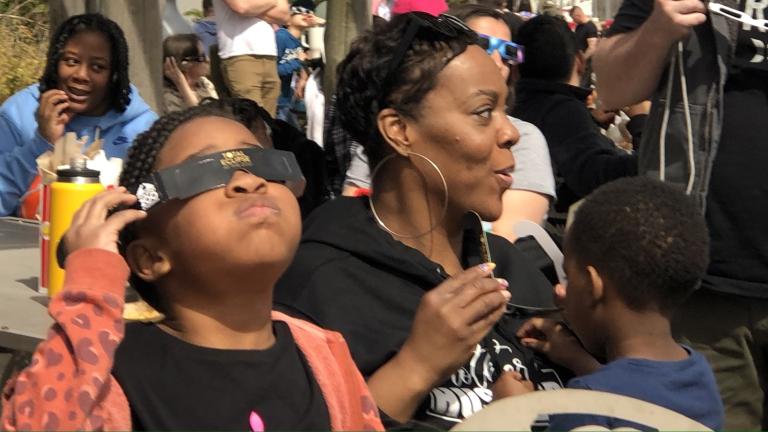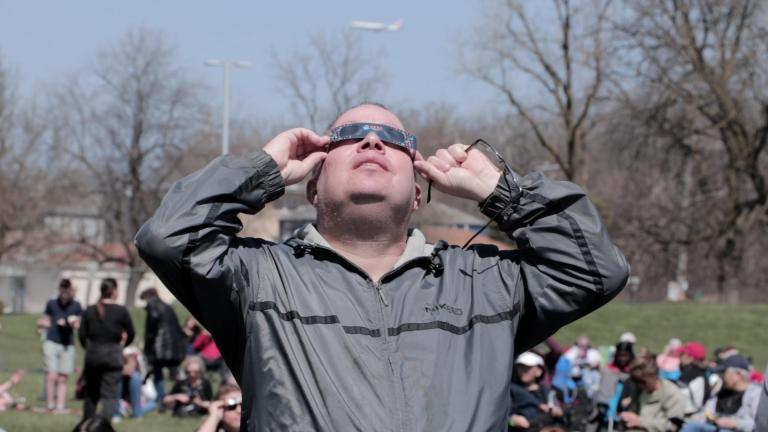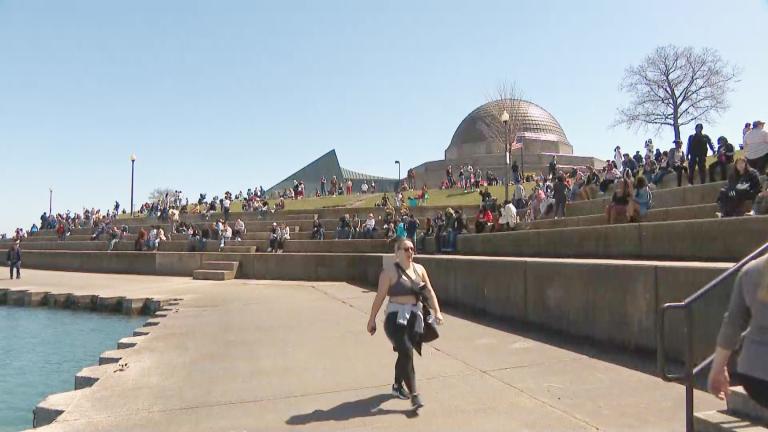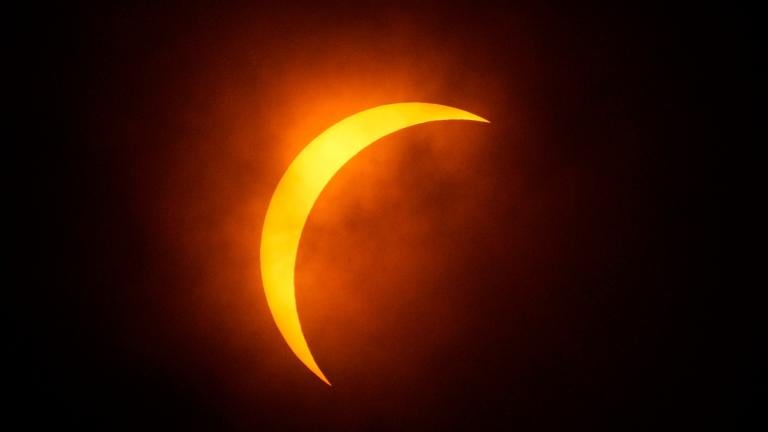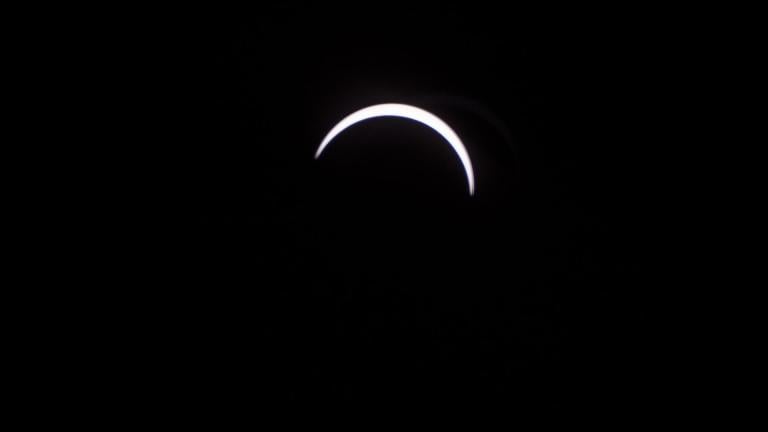Video: Joining "Chicago Tonight" to discuss the eclipse are Geza Gyuk, director of Astronomy at the Adler Planetarium, and "Astro Joe" Guzman, an astronomer and educator. (Produced by Paul Caine)
Election Day 2022 will kick off with a total lunar eclipse: celestial portent or coincidence?
Though a few clouds may obscure the event from time to time, early rising Chicagoans — or their night owl/insomniac counterparts — should have a good view of the sky show. There won't be another like it until March 2025. (The results were spectacular. Scroll down for photos.)
To watch the eclipse, which is safely seen with the naked eye, look to the west. For city dwellers, buildings and trees may obscure your sightlines as the moon sinks toward the horizon.
Here's the timeline in the central time zone, with tips from NASA on what to expect.
2:02 a.m.: The moon enters the the outer part of Earth's shadow (known as the penumbra). The effect is subtle.
3:09 a.m.: As the moon enters Earth’s inner shadow (the umbra), it will look like a bite is being taken out of the lunar disk. The part of the moon inside the umbra will appear very dark.
4:16 a.m.: Totality begins, with the entire moon in the Earth’s umbra. The moon will appear to turn coppery-red, hence the name blood moon.
4:59 a.m.: Maximum eclipse.
5:41 a.m.: Total eclipse ends and the process reverses.
What is a lunar eclipse?
A lunar eclipse happens during a full moon, when the moon passes through the Earth's shadow. In other words, Earth is positioned between the moon and sun, and the moon is shrouded in the shadow that Earth casts into space.
Why does the moon "turn" red?
During an eclipse, light from the sun has to pass through Earth's atmosphere. Blue lightwaves are scattered, but orange, red and yellow light penetrate. According to NASA: "The more dust or clouds in Earth’s atmosphere during the eclipse, the redder the moon will appear. It’s as if all the world’s sunrises and sunsets are projected onto the moon."
For those who miss the show, Adler Planetarium is recording a livestream, available for later viewing.
Wait just a moon-ute! The last lunar eclipse of the year occurs next week??
Retweet this #TotalLunarEclipse viewing chart to use as a reference on 11/8! pic.twitter.com/N4VTnRqCn7
— AdlerPlanet (@AdlerPlanet) November 1, 2022
Those who woke up in the wee hours were rewarded for their efforts. Professional and amateur photographers alike captured the view.
The Blood Moon on Tuesday morning. Total Lunar Eclipse over Chicago. #weather #news #ilwx #chicago #LunarEclipse #BloodMoon pic.twitter.com/AujpHSwLXK
— Barry Butler Photography (@barrybutler9) November 8, 2022
Lunar eclipse over #Chicago https://t.co/r0zM4aN6ed pic.twitter.com/tmzzX5L1WV
— Joshua Mellin (@JoshuaMellin) November 8, 2022
Total full moon eclipse this morning in Chicago! pic.twitter.com/iqmxlUVuj3
— Laura Ann Toma (@LauraAnn_777) November 8, 2022
I got up early so you wouldn't have to. pic.twitter.com/44CcFSARL8
— DMercer (@53viroqua) November 8, 2022
Contact Patty Wetli: @pattywetli | (773) 509-5623 | [email protected]

